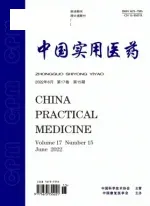儿童分泌性中耳炎手术治疗的远期转归
陈观贵 翟锦明
儿童分泌性中耳炎手术治疗的远期转归
陈观贵 翟锦明
目的观察鼓室置管对分泌性中耳炎儿童患者的远期效果及对听力及鼓膜形态的影响。方法回顾性分析2003年9月至2007年6月治疗的78例儿童分泌性中耳炎患者。采用鼓室置管术,合并腺样体肥大者同时行鼻内镜下腺样体切除术。通气管留置时间4~28个月,随访4~7年。结果56例(71.8%)自觉听力恢复正常,18例(23.1%)觉听力明显改善,仅有4例(5.1%)无明显改善,平均听力提高约20 dB HL。42耳(44.7%)鼓膜形态正常,16耳(17.0%)出現鼓膜钙化,25耳(26.6%)鼓膜局部变薄、18耳(19.1%)鼓膜内陷,3耳(3.2%)鼓膜穿孔,2耳(2.1%)鼓膜肉芽,0例胆脂瘤,8耳(8.5%)鼓室积液并再次手术。鼓室置管后患者听力提高将近20 dB HL,但高达53.2%的患儿鼓膜出现异常改变。结论鼓室置管导致近一半患儿鼓膜出现异常改变,严格的掌握手术适应证很重要,术后需严格随访及跟进处理。
中耳炎;外科手术;鼓室置管
分泌性中耳炎是导致儿童听力下降的最常见原因,鼓室置管是治疗分泌性中耳炎及复发性中耳炎常用的治疗手段,本研究通过长时间的跟踪随访,分析儿童分泌性中耳炎患者鼓室置管后的长期转归。
1 资料与方法
1.1 临床资料2002年9月至2007年6月在我科住院治疗并有完整随访资料的78例(94耳)儿童分泌性中耳炎患者。其中,男41例,女37例,左耳27例,右耳35例,双耳16例,共计94耳,年龄3~15岁,平均6岁;病程12周至2年。入选病例手术前经过门诊观察治疗至少12周。可以配合客观听力检查的患儿进行纯音测听检测,电耳镜观察并记录患者鼓膜形态。
2 结果
2.1 主诉症状56例(71.8%)自觉听力恢复正常,18例(23.1%)觉听力明显改善,仅有4例(5.1%)无明显改善。症状全部消失50例(64.1%),存在耳鸣8例(10.2%),耳堵塞感反复发作13例(16.7%),反复耳流液7例(9.0%)。
2.2 鼓膜形态改变42耳(44.7%)鼓膜形态正常,16耳(17.0%)出現鼓膜钙化,25耳(26.6%)鼓膜局部变薄、18耳(19.1%)鼓膜内陷,3耳(3.2%)鼓膜穿孔,2耳(2.1%)鼓膜肉芽,0例胆脂瘤,8耳(8.5%)鼓室积液。鼓室积液复发的患儿6例(8耳),原因为脱管过早或通气管堵塞,再次行鼓室置管术。
2.3 听力学随访全部病例中,记录到术前及术后纯音测听结果的病例共43例,应用统计软件SPSS 15.0进行配对t检验。术前气导平均听阈为(32.4±10.7)dB,术后约(12.3± 8.5)dB,两者比较差异有显著性(P<0.05)。
3 讨论
鼓室置管术是儿童全身麻醉手术中最常见的手术类型之一,本研究中,鼓室置管术后长期随访4~7年,显示术后听力较术前听力有显著性提高,但高达53.2%的患儿鼓膜出现病理异常改变。鼓膜改变包括鼓室硬化、鼓膜局部内陷、萎缩、鼓膜穿孔,鼓膜肉芽。文献报道鼓膜改变的发生率不一,据统计局部萎缩及鼓室硬化是最常见的病理改变[1],鼓膜局部萎缩的发生率为25%,鼓室硬化发生率为23%~53[2]。鼓室硬化的发生率与鼓膜通气管留置时间成正比,Yaman发现鼓室置管时间大于12个月是鼓室硬化发生率大大提高,小于6月时鼓膜硬化发生率为14.3%,而大于12个月时为44.1%[3]。鼓膜硬化多发生于鼓室置管后,虽然鼓膜硬化只是导致轻微的听力损失(不超过0.5 dB),但其长期的负面影响仍未能排除[4]。
对于儿童分泌性中耳炎进行手术治疗的目的之一是改善患儿的听力,让其享有足够的听力水平及良好的语言发育环境。该研究中鼓室置管后患儿的听力大部分可以恢复到或接近正常儿童听力水平,术前比术后听力提高约20 dB HL,与其他学者的研究结论一致[5]。但手术后的鼓膜病理改变会增加听力损失的风险。Johnston设计一项前瞻性对比研究,观察429例患儿分泌性中耳炎的治疗效果,发现鼓室置管术(包括早期治疗和晚期治疗)大大增加鼓膜病理改变发生率,并导致听阈提高约2.0 dB HL,因此作者建议对于3岁前患有分泌性中耳炎的患儿,如果没有合并神经性聋或严重的传导性聋、平衡功能障碍或严重的鼓膜内陷等情况,长时间的观察应是合适的处理措施[1]。本文作者建议经过临床药物治疗或者观察至少3个月,并且患者存在40 dB HL以上的听力下降,或伴有高危因素等,才考虑进行手术治疗,术后需严格随访及跟进处理。
[1]Johnston LC,Feldman HM,Paradise JL,et al.Tympanic membrane abnormalities and hearing levels at the ages of 5 and 6 years in relation to persistent otitis media and tympanostomy tube insertion in the first 3 years of life:a prospective study incorporating a randomized clinical trial.Pediatrics,2004,114(1):58-67.
[2]Pereira MB,Pereira DR,Costa SS.Tympanostomy tube sequelae in children with otitis media with effusion:a three-year follow-up study.Braz J Otorhinolaryngol,2005,71(4):415-420.
[3]Yaman H,Guclu E,Yilmaz S,et al.Myringosclerosis after tympanostomy tube insertion:relation with tube retention time and gender.Auris Nasus Larynx,2010,37(6):676-679.
[4]Vlastarakos PV,Nikolopoulos TP,Korres S,et al.Grommets in otitis media with effusion:the most frequent operation in children. But is it associated with significant complications?.Eur J Pediatr,2007,166(5):385-391.
[5]Valtonen HJ,Qvarnberg YH,Nuutinen J.Otological and audiological outcomes five years after tympanostomy in early childhood.Laryngoscope,2002,112(4):669-675.
Long-term effects of tympanostomy tube insertion on children with otitis media with effusion
CHEN Guan-gui,ZHAI Jin-ming.Department of Otorhinolarygology,Second Affiliated Hospital of Guangzhou Medical college,Guangzhou 510260,China
ObjectiveTo study the long-term effects of tympanostomy tube insertion on the tympanic membrane and hearing results.MethodsFrom September 2003 to June 2007,tympanostomy tubes were inserted in 78 children for otitis media with effusion,adenoidectomy were performed in 10 cases combined by adenoid hypertrophy.Ventilating tubes were retained for 4~28 months,and all patients were followed up for 4~7 years,audiometric testing and tympanic membrane abnormalities were recorded.ResultsSubjectively 71.8% of the patients noticed hearing recovery,while 23.1%improved,5.1%no improvement.The improvement of hearing was about 20 dB HL on average.44.7%patients showed normal tympanic membrane,while tympanosclerosis was observed in 16 ears(17.0%),Segmental atrophy changes of the tympanic membrane were seen in 25 ears(26.6%),Retraction were seen in 18 ears(19.1%),the eardrum was perforated in 3 ears(3.2%),granulation happened to 2 ears(2.1%),and no cholesteatoma was found in all cases.Repeated intubation was performed in 8 ears(8.5%)for recurrence.Tympanostomy tube insertion can effectively improve hearing in a large percentage of children for otitis media with effusion.However,tympanic membrane abnormity were found in 53.2%patients.ConclusionTympanic membrane abnormity were found in about one half of patients after tympanostomy tube insertion,so surgery must be under strict indication and following up timely with appropriate management when necessary.
Otitis media with effusion;Surgery;Tympanostomy tube insertion
510260广州医学院第二附属医院耳鼻咽喉科
1.2 手术方法患者均取静脉或者复合全身麻醉,耳科手术显微镜下或耳内窥镜下操作,消毒外耳道后于鼓膜前下或后下象限切开鼓膜,抽吸出鼓室内积液,用含地塞米松的生理盐水冲洗鼓室,放置入哑铃型硅胶中耳通气管(内径1 mm)。其中16例合并腺样体肥大,同时进行鼻内镜下腺样体切除术。
1.3 随访通气管留置时间4~28个月,随访4~7年,1年内每月随访1次,1年后每3个月随访1次。随访检查鼓室无分泌物后取出通气管,同时记录患儿的主观症状、鼓膜形态学改变及听力学检查。

